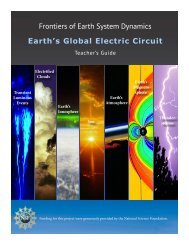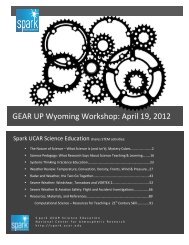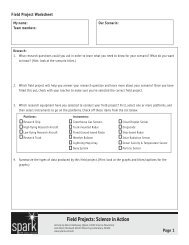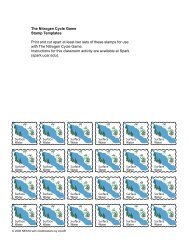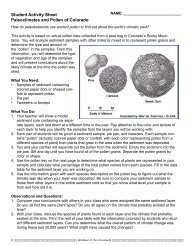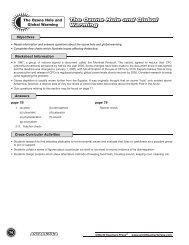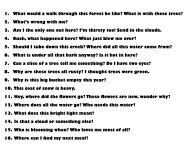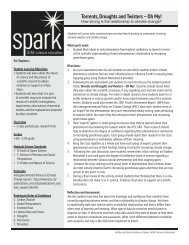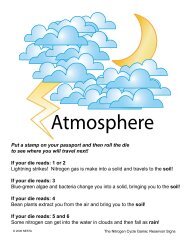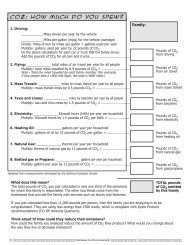#18- Air Pollution 101 Lesson Plan - Salsa!
#18- Air Pollution 101 Lesson Plan - Salsa!
#18- Air Pollution 101 Lesson Plan - Salsa!
Create successful ePaper yourself
Turn your PDF publications into a flip-book with our unique Google optimized e-Paper software.
Natural resources<br />
Environmental quality<br />
Natural and human-induced hazards<br />
Science and technology in local, national, and global challenges<br />
Materials Needed:<br />
• Reproducible #1 – Daily Activities<br />
• Computers with Internet access for each group or other means of researching air<br />
pollutants<br />
• 1 Clear, plastic (or small glass) jars recycled from café for each student<br />
• Liquid food coloring-set for each group or table or student, depending on teacher<br />
preference. For this lesson, we used red, green, yellow, and blue.<br />
• Ground charcoal (from pet store, or ground substance that will not dissolve in water)<br />
• Cocoa mix and lemonade drink mix (each student will need some of each mix)<br />
• Clean water<br />
• 1 Large container to hold all of students’ water once they have completed the<br />
demonstration<br />
• Newspaper articles about air quality if available (optional)<br />
Assessment:<br />
Students will be assessed through the following activities:<br />
• Participation in all activities<br />
• Group work and level of understanding of the pollutants in Activity One<br />
• Content and quality of the paper written in the extension activity<br />
LESSON BACKGROUND<br />
Relevant Vocabulary:<br />
• Carbon Monoxide: A colorless, odorless gas formed when a compound containing<br />
carbon burns incompletely because there is not enough oxygen. It is present in the<br />
exhaust gases of automobile engines and is very poisonous. 2<br />
• Lead: Heavy metal that can cause mental retardation, and increase in the rate of<br />
infections and cancer by blunting body's defense mechanisms (the immune system).<br />
Lead accumulates in blood, bones, and soft tissue and may result in damage to brain,<br />
central and peripheral nervous system, and kidneys. While its suggested threshold is 0.4<br />
part-per-million (ppm) for adults and 0.3 ppm for children, people can exhibit lead<br />
poisoning symptoms at 0.2 ppm. Lead intake can occur through water stored in lead<br />
pipes, food contaminated by lead in soil, lead-paint flakes, or motor exhaust that<br />
contains lead compounds as ant-knocking or performance enhancing additives in<br />
gasoline. 3<br />
2 The American Heritage® Science Dictionary Copyright © 2005 by Houghton Mifflin Company. Published<br />
by Houghton Mifflin Company. All rights reserved. Retrieved 05 May 2011 from<br />
http://www.thefreedictionary.com/carbon+monoxide.<br />
3 "What Is Lead (Pb)? Definition and Meaning." BusinessDictionary.com - Online Business Dictionary. Retrieved 05<br />
May 2011 from http://www.businessdictionary.com/definition/lead-Pb.html.




